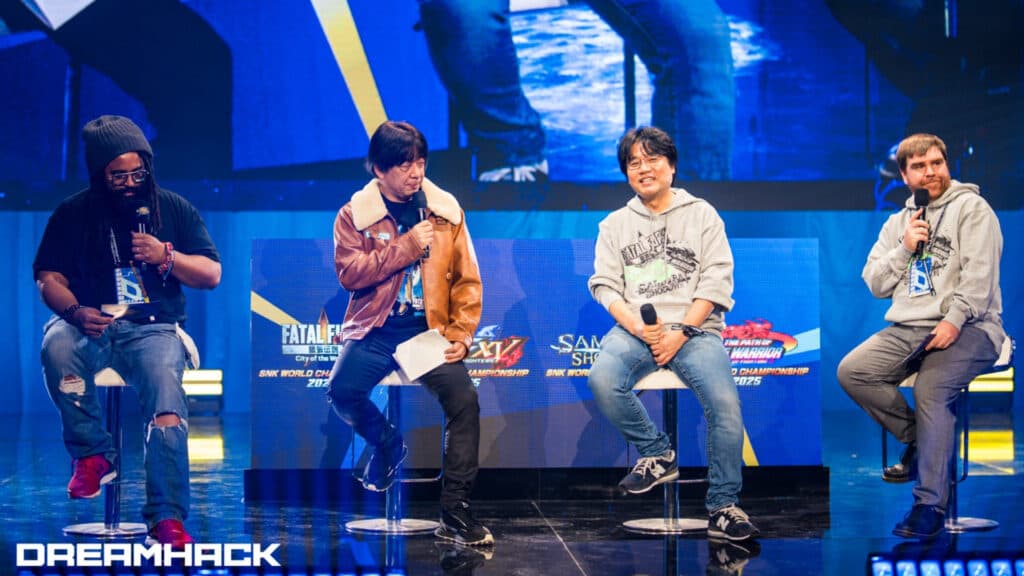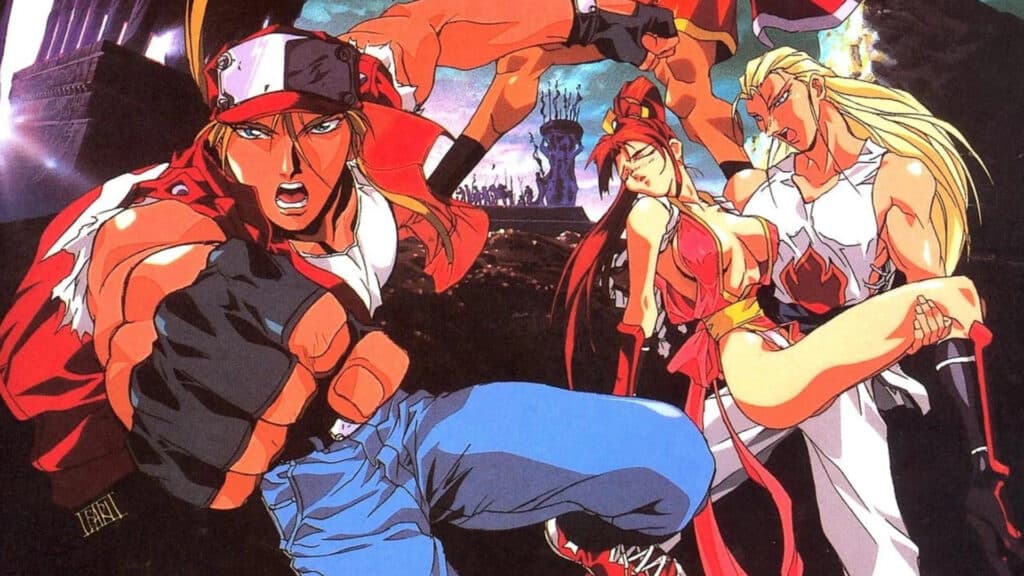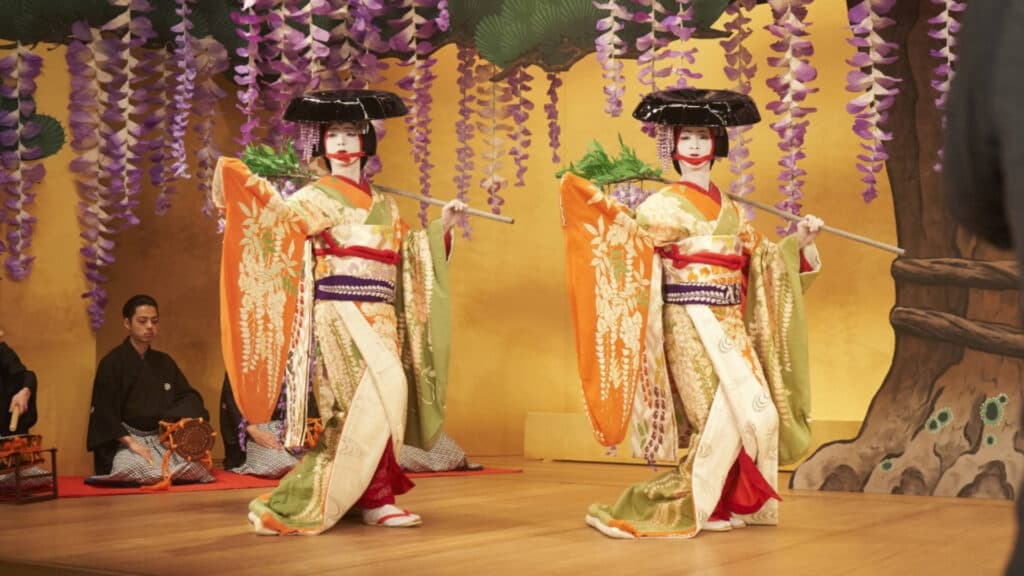Mecha designer Masami Ōbari reflected on his 40-year career, met with fans at DreamHack Atlanta, and shared some of his recommendations.
Masami Ōbari is a renowned Japanese designer, animator, and director, celebrated as a legend in the mecha industry. He attended DreamHack Atlanta 2025 to discuss his career, share his experiences with the genre, and engage with numerous fans eager to learn about his projects.
Backstage at DreamHack Atlanta, Masami Ōbari spoke with esports.gg about the development of his work, his most significant projects, and his connection to the Fatal Fury universe. He also offered valuable recommendations for aspiring artists and animators looking to break into the industry.
Who is Masami Ōbari?
Born on January 24, 1966, in Hiroshima, Japan, Masami Ōbari is one of the most famous anime directors, animation directors, and mecha and character designers. For the fans, he is the king of mecha, and the same goes for all the new artists who are inspired by his long career.
"I've always been interested in animation since I was a kid. I used to draw oil paintings, but I didn't start with animation or games," he explained. "Since I love watching movies and wanted to become a movie director, I had to present a clear visual of my ideas. I had to draw. That's why I became an animator."
More than just raw talent or passion, Ōbari had to work hard to achieve his dreams. "I didn't know how to work my ideas into the frame. I had to learn how to be a writer and a designer."
The golden age of mecha
Back in the 1980s, the mecha genre revolutionized the industry with big titles like Gundam, Macross, Voltron, and Bubblegum Crisis. "There were a lot of things happening, especially in the anime and manga industry. I was part of that, I was the youngest director in Japan because I debuted at 18 years old." His major break came with Dancouga - Super Beast Machine God in 1985, which launched his career and made him one of the most prolific mecha designers in the industry.
In his 20s, Ōbari created his first opening animation for the Sunrise Studio for the new Brave series. This franchise helped reintroduce the Super Robot genre to the Japanese mainstream in the 1990s. Just one year later, he was given his first directorial role by directing episodes 5 and 6 of the Bubblegum Crisis OVA series.
From 1992 to 1994, he also made three Fatal Fury movies. "It was a very popular period in Japan. It was a good time to be on TV, but you can't express it properly there. However, in the OVA and theater, there is more freedom, more, and the platform is different, so you can express it wonderfully. That's why I went in that direction."
The "Ōbari style"
As fans of the genre began to take notice, they identified a set of distinct traits that came to define what they called the “Ōbari style.” His designs blended power and elegance, capturing both the visual intensity and emotional resonance of the mecha genre.
“It’s a style I developed in my early twenties, back when everything was still 2D animation,” Ōbari explained. “I created a set of proportions for robots that would look cool no matter who drew them. I wanted others to emulate that approach, and before long, it helped shape the look of Japanese robot animation.”
“My drawing style became a sensation,” he continued. “Whenever I worked on something, an anime series, a promotional video, anything, people immediately recognized it as the Ōbari style. I pioneered a distinct form of animation that’s uniquely mine, especially in how robots are portrayed on screen: their dynamic presence, their motion, and the energy of their battles.”
"Has your style and creative process changed significantly over the years?" we asked. He replied, "I don't think it's changed much. I use both digital and 3D. For example, there's an animation called Brave Bang Bravern! that I worked on, and it's a hybrid, using both 2D and 3D. The same goes for Super Robot Wars or Gundam. If I can draw it, I will. If I can't or it takes too much, for example, with certain camera angles, then I'll use 3D."
Fatal Fury: City of the Wolves
In 2025, it was revealed that Ōbari would be producing a promotional short for the Fatal Fury: City of the Wolves video game released in April. "I am a big fan of the game itself. I did the opening animation for Tekkaman Blade and Macross II, and then I got an offer to draw for Fatal Fury: City of the Wolves. For me, it was a surprise," he laughed. "At first, I thought it was a lie. Then, I even asked for a copy of the game to play it myself. I talked with the SNK animators, Hiroshi Matsumoto and Takashi Nishiyama, and we were able to create a story that was very close to the original. It was a lot of fun."
"In this way, fighting games and animation came together, creating a new stage where the original works themselves could evolve. The animation reached new heights, and so did the original game." But Fatal Fury: City of the Wolves was way more than just a continuation of the franchise. "No other project had achieved this before. A game and an animator collaborated closely with the company to create something that elevated both franchises. Thinking about it, it was around 34 years ago that I worked on Fatal Fury. It paved the way for a lot of things, for sure."
Meeting the fans at DreamHack Atlanta 2025
On the first day of November, Masami Ōbari had the opportunity to talk with the fans and the community at the DreamHack Atlanta 2025 event. "I'm so happy. At today's signing event, there was someone who said she liked Voltage Fighter Gowcaizer, and that game was released 30 years ago. It was an anime-based game that I made the story, designed the characters, and made into an anime. It was sold out in the US, reached third place in the Billboard rankings, and was definitely a big hit. Having fans from 20 to 40 years ago is really interesting."
What is Ōbari into lately?
With a 40-year-long career in the industry, Ōbari still finds it difficult to name the project he is most proud of. "I don't know," he answered. "I'm just glad I've always done my best." However, we were interested about what Ōbari's favorite anime of all time is. "I love Studio Ghibli projects. Ninja Scroll by Yoshiaki Kawajiri. Majin Buu Saga as well."
As for manga, anime, or games played lately, Ōbari has a very clear opinion about adaptations. "I'm a little against manga being turned into anime and vice versa. I want to leave the original material untouched. I think they need to be beautiful in their true form."
He hasn't had much time lately to watch a lot of movies or play video games. "I watched the film Kokuho by Lee San-il, and it was very good. I was really impressed," he said. Despite having many games at home, he hasn’t been able to play them. "Unfortunately, I just don’t have the time." Titles like Silent Hill f, Ghost of Yotei, Death Stranding 2, Resident Evil, and The Last of Us Remastered are all waiting for him, but he hasn't been able to dive into them. "I wish the days were longer so I could have more time to play," he laughed.
Advice to the next generations
"Don't copy other games, anime, or manga," Ōbari answered right away. "You have to develop your own style based on your experiences. If you don't have them, you won't be able to create something that moves people. It needs to be yours, to have your own personal flair. Even if it is sports, anything you watch and analyze, break it down, use your experience to animate it. If it comes from the heart, from your spirit, it's art. It has to be unique."
That's all for now. Stick around for more FGC news, guides, and updates on esports.gg.


